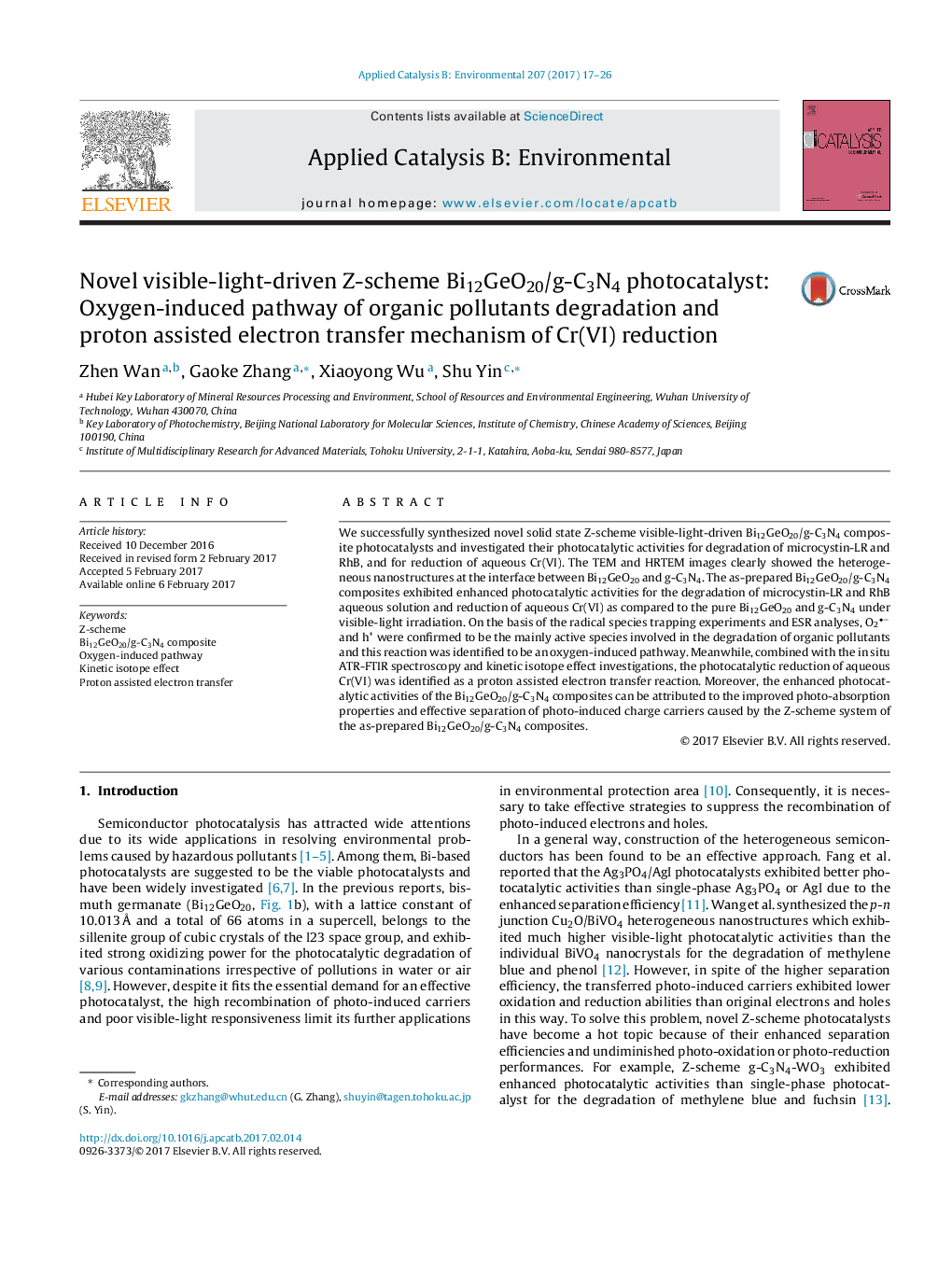| Article ID | Journal | Published Year | Pages | File Type |
|---|---|---|---|---|
| 6454044 | Applied Catalysis B: Environmental | 2017 | 10 Pages |
â¢Novel Z-scheme visible-light-driven Bi12GeO20/g-C3N4 photocatalysts were prepared.â¢The Bi12GeO20/g-C3N4 composites exhibited enhanced photocatalytic activities.â¢The degradation of microcystin-LR and RhB is an oxygen-induced reaction.â¢The reduction of aqueous Cr(VI) is a proton assisted electron transfer reaction.
We successfully synthesized novel solid state Z-scheme visible-light-driven Bi12GeO20/g-C3N4 composite photocatalysts and investigated their photocatalytic activities for degradation of microcystin-LR and RhB, and for reduction of aqueous Cr(VI). The TEM and HRTEM images clearly showed the heterogeneous nanostructures at the interface between Bi12GeO20 and g-C3N4. The as-prepared Bi12GeO20/g-C3N4 composites exhibited enhanced photocatalytic activities for the degradation of microcystin-LR and RhB aqueous solution and reduction of aqueous Cr(VI) as compared to the pure Bi12GeO20 and g-C3N4 under visible-light irradiation. On the basis of the radical species trapping experiments and ESR analyses, O2â and h+ were confirmed to be the mainly active species involved in the degradation of organic pollutants and this reaction was identified to be an oxygen-induced pathway. Meanwhile, combined with the in situ ATR-FTIR spectroscopy and kinetic isotope effect investigations, the photocatalytic reduction of aqueous Cr(VI) was identified as a proton assisted electron transfer reaction. Moreover, the enhanced photocatalytic activities of the Bi12GeO20/g-C3N4 composites can be attributed to the improved photo-absorption properties and effective separation of photo-induced charge carriers caused by the Z-scheme system of the as-prepared Bi12GeO20/g-C3N4 composites.
Graphical abstractDownload high-res image (151KB)Download full-size image
